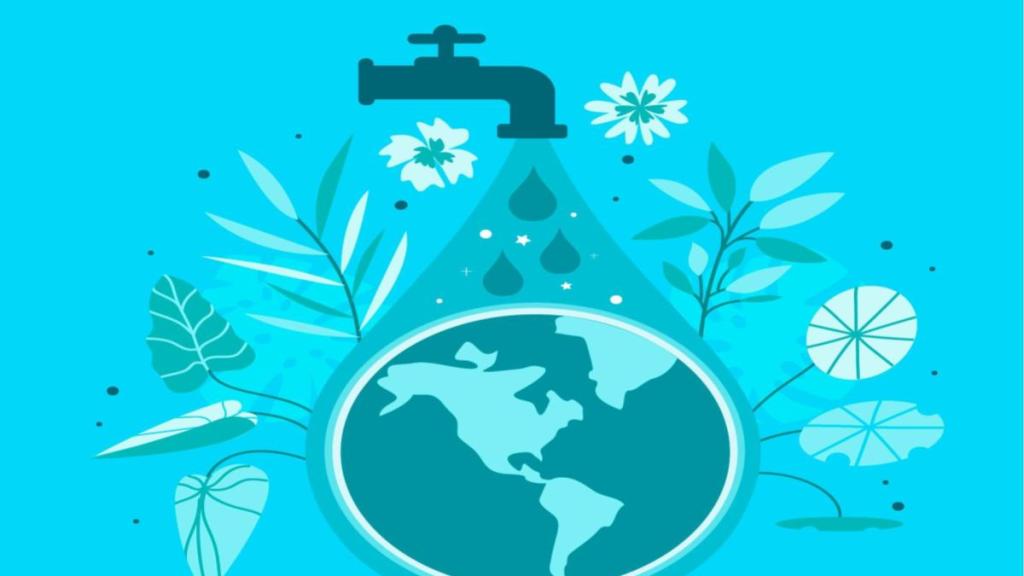By Bishwadeep Ghose
The importance of drinking water cannot be emphasised enough in a country like ours. The central government’s Jal Jeevan Mission (JJM) has been the umbrella scheme to provide access to tap water in rural India. It is heartening to see that the government is giving due attention to water and sanitation – a fact reflected in recent Union Budgets. The Budget for fiscal year 2023-2024 had allocated `70,000 crore for the JJM, while the Interim Budget for 2024-25 has announced `70,163 crore for the same. The money has clearly been used to good effect, with the JJM having successfully provided tap water connections to 142.5 million rural households (almost 74%) of a total of 192.6 million till date, as per government data.
In fact, both the JJM and Swachh Bharat Mission (SBM) give us a stellar opportunity to push the needle on the coverage of infrastructure with their huge public investment and high political will. However, challenges persist in some states, and while the current Budget will undoubtedly advance the implementation of these programmes, there is a need to improve the operation and maintenance (O&M) of the infrastructure being created under the programmes, while also creating a future-proof mechanism for delivery of quality services.
Encouraging community engagement
While the JJM’s aim is laudable and, in all likelihood, India will achieve universal coverage at some point, the concern will shift towards ensuring that water flows continuously through these taps. However, what is to be borne in mind is that taps and pipes will eventually break and will need repairs. Besides, groundwater that supplies water for most of these schemes may dry up or get contaminated.
The geological and demographic diversity of our country challenges the notion of a centralised management system to keep these schemes running. Hence, a decentralised, community-based approach is needed for local ownership and sustainable management of water for ensuring sustainable and equitable access to services. Despite the involvement of private operators, without community engagement, it is a challenge to ensure accountability. Also, since the impact of climate change is very contextual, having a localised response mechanisms helps in agility as well as developing context specific responses.
For this, we need to shift from a project/mission mode to setting up utilities for ensuring access to sustainable water and sanitation services. Identifying and skilling the right service providers, giving them the right incentives to perform and making them accountable to some institutions for support and oversight, needs to be developed. This will entail tasks for operations and maintenance of assets, tariff collection, grievance redressal, and sharing relevant information and knowledge.
To emphasise and encourage a sense of community ownership, the JJM asks the local communities to contribute 5-10% of the total capital cost towards the water supply infrastructure in the village, depending on the terrain and the social demographics. The communities are then awarded with a revolving fund, after the successful implementation of the scheme, to meet any unforeseen expenditure and to ensure long-term sustainability of the scheme.
Training water user committees and developing a network of ‘Jalabandhu’ mobile mechanics has already proven to be effective in maintaining and repairing water points across the country. Art and theater can be used to promote safe water, sanitation, and hygiene practices. It is also a good idea to encourage school children to participate in community-level awareness initiatives and take ownership of water and sanitation facilities.
Last, but not the least, private organisations should partner with local leaders, communities, and governments to find ways to ensure that water, sanitation, and hygiene services are used responsibly and sustainably.
Managing access to groundwater
Tap water is mostly sourced from groundwater, but the major chunk of groundwater in India is used for agriculture. The dependence on groundwater for supplying drinking water is very high (> 90% in rural). The same groundwater (aquifer) supplies for agriculture as well (> 70%). The piped water schemes through JJM can fail if aquifers run dry. There is thus an urgent need for manging groundwater as a common pool resource for fair and transparent allocations for multiple uses.
Preserving freshwater ecosystems is crucial for maintaining the water balance and supporting biodiversity. A budget allocation for the rejuvenation of water bodies and afforestation around catchment areas can enhance water availability and quality, which needs to be ensured to have positive health outcomes. There is a need to strengthen the surveillance infrastructure and use the water quality testing data for empowering and informing citizens and authorities alike for taking preventive or mitigating measures. There is also a need to democratise water testing and incentivise solution building. The private sector can play an important role for providing these services under a common standards framework.
Collective and collaborative onus
Water, however, is not the responsibility of governments, local bodies, or private organisations alone; everyone can and should contribute to achieving this mission. All it takes is simple precautions such as disposing chemicals safely; using fertilisers judiciously; turning off taps after use; checking for leaky taps and getting them fixed; and acquiring and spreading water education.
There is also a dire need for our infrastructure to be climate-resilient given the environmental vagaries. It is critical for services to be adaptive and to protect our freshwater ecosystems that are our first line of defence. We need to focus on resilience building and adaptation, keeping in mind how rainfall and temperature play out in specific geographies and demographies. Having this as a risk mitigation strategy will help in reducing the vulnerabilities of many communities and our investments in assets.
These seemingly simple and obvious water management practices are valuable investments that will help us create a water-secure tomorrow for ourselves and future generations.
The author is country director at Water for People. Views expressed are personal.


